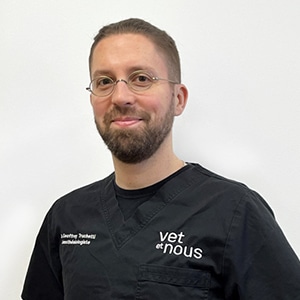
This service is offered exclusively to all our referring veterinarians. You can submit your reference request via our Vet Connexion portal.
Why does my pet need an anesthesiologist?
Your animal should be monitored by one of our anesthesia specialists in the event of:
- Heart disease
- Diabetes
- Hyperthyroidism
- Addison's disease
- Brachycephalic syndrome
- Chest procedure
- Removal of large masses
Our anesthesiology specialists and their team will accompany you throughout the anesthesia process, starting at home before the procedure up to their return.
Your pet will be cared for:
- Our team includes animal health technicians who specialize in anesthesia.
- Our protocols are tailor-made by a veterinarian specialized in anesthesia and analgesia
- We use a multimodal technique to prevent and treat pain (infusion, guided, echo block, neurostimulation).





